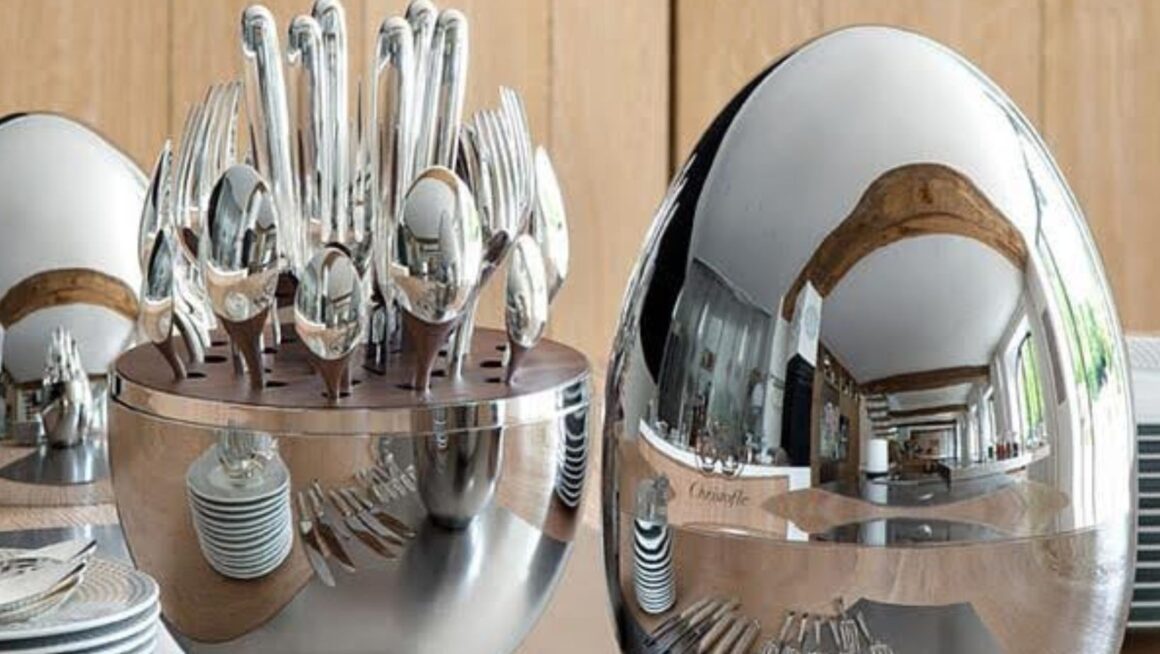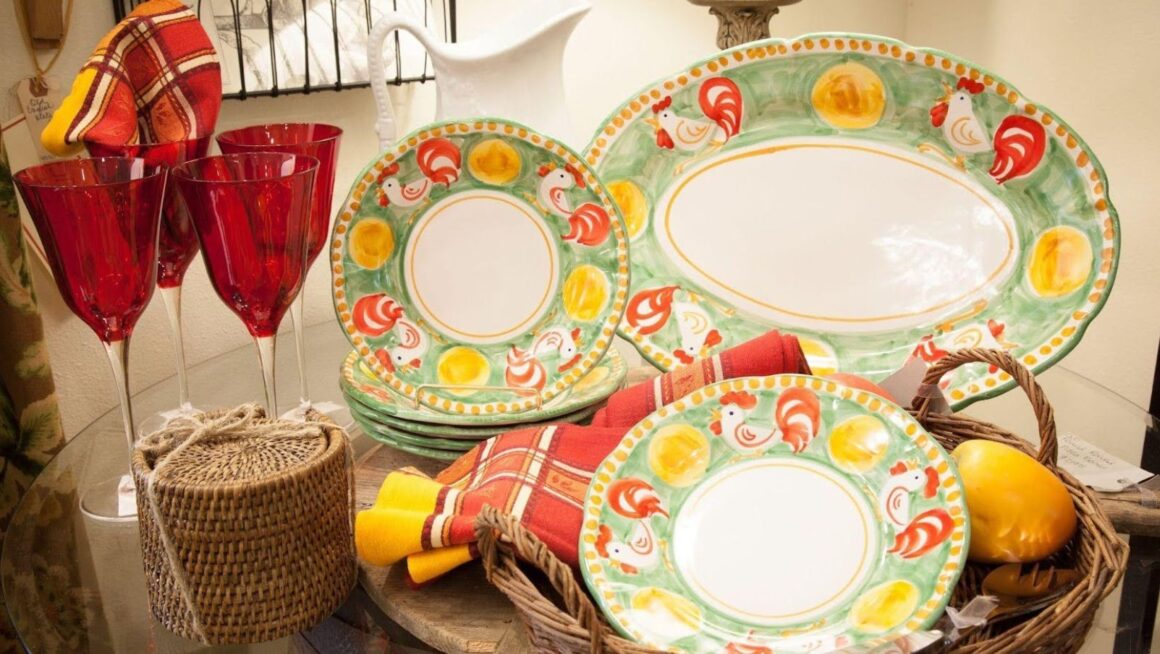
You know how even the fanciest room can feel like something’s off? Like, it’s missing that one last detail to make the whole picture complete. Therefore, the search begins, and a frequent choice is exclusive accessories or, in some cases, prominent art objects. These days, designers are really leaning toward exclusive tableware that feels like art—expensive-looking and full of concepts.
Such a piece can give the space a finished look, highlight the style, and even change the character of the table setting. We’ve put together a quick roundup of pieces and highlighted some of the most popular collections among designers—things that can help you create a little magic in your home with just a wave of your hand.
Why Tableware?
The use of such objects in décor is steeped in history, tracing back to the grandeur of royal courts and aristocratic receptions. Back in the 18th–19th centuries, table décor was all about showing off. If you had Sèvres porcelain, Baccarat crystal, or silverware on the table, it instantly told people how high your status was. In places like Versailles and Venice, it wasn’t just about the food—the tables were decked out with full sets, cups, vases, and candelabras arranged like art.
In addition, expensive items always indicated the status of the hosts, which is why at all times it was customary not only to set tables lavishly but also to display the most luxurious objects within the interior. Popular choices included ornate plates, goblets, silver accessories, and delicate wine and flute glasses arranged in tray compositions.

Today, the trend has made a real comeback. Enthusiasts of sophisticated style and luxury décor passionately study the latest collections from leading maisons, seeking exclusive tableware online and pursuing reissued pieces adorned with historic motifs.
What’s Trending in Today’s Décor Projects
Honestly, picking the right décor or a whole line of it only makes sense once you’ve nailed down the interior concept. In other words, it’s all about matching the style and direction of the space with the pieces you choose. Therefore, in classical rooms, one should focus on classic style, while in simple and modern interiors, the emphasis should be on minimalism, and so forth.
By the way, the most popular luxury manufacturers always have their own signature style, so we decided to group our recommendations by décor direction.
Scandi Style
Scandi style is basically about straight lines, being practical, and keeping things simple and natural. It is distinguished by soft, rounded forms, calm natural colors, and an almost complete lack of extravagance or gaudiness. In these projects, décor is kept to a minimum, or limited to pieces with cool, understated designs—geometry, fine linear patterns, nature-inspired motifs, and textures that mimic wood, stone, or fabric.
If you’re going for a Scandi-style table setup, check out these brands:
- Iittala — plates, bowls, dinner sets, plus glassware (wine, beer, specialty), decorative glass, and ceramics.
- Georg Jensen — cutlery, plates, bowls, glassware (glasses, carafes), and stylish serving accessories.
- Hering Berlin — luxury tableware and cutlery with refined, stylish design, often highlighting details and premium materials.
- J.L. Coquet — distinguished French porcelain, exquisite dinner services, delicate ceramics, and classical forms adorned with subtle decoration.
- Royal Copenhagen — porcelain and dinnerware, cups, decorative tables, and tea sets with hand-painted designs.
Bold Loft
The loft aesthetic is defined by interiors showcasing exposed communications, unfinished concrete, brick walls, metal structures, and expansive windows. This style uses rough textures, antique elements, vintage furniture, and minimalist décor with character, turning the space into an art object in which every detail shapes the mood. Here are some brands that nail the loft feel:
- Alessi — cool designer table accessories, statement cutlery, and décor with a bit of industrial flair.
- Oneida Limited — offering an extensive selection of dinnerware, cutlery, and glassware, with metal and refined geometric forms.
- HAY — minimalist shapes often mixing metal with rough textures.
- Dansk Designs — dishes, cutlery, serving pieces, and accessories.
- Saint-Louis — glassware and accessories that create a strong effect when contrasted with concrete and metal.
Bohemian Style
Bohemian (Boho) is defined by freedom from patterns, a love of life, and a story expressed in every detail.

At home, boho comes through in a mix of things—bright fabrics, ethnic prints, vintage dishes, souvenirs from trips, and handmade art. It is suitable for creative, free spaces with an individual character. Tableware especially suited to this aesthetic includes:
- Juliska — inspired by Bohemian glass, with handmade details, floral and berry motifs, decorative dinnerware, and glassware.
- Artel — handmade crystal goblets, glasses, and art objects, often with creative shapes.
- Villeroy & Boch — premium dinnerware with decorative elements and varied patterns.
- Christofle — elite cutlery and silver with refined design.
- Krosno Glass — glass and crystal pieces like vases, decanters, and glasses.
Art Deco
Art Deco is characterized by gloss, polished metal, brass, velvet, clear geometry, and saturated colors such as emerald, sapphire, wine, and black. To really nail this style, you need sleek sets, crystal glassware, touches of gold, and standout shapes on the table. In the interior, it’s all about symmetry, decorative flair, and a love for character-rich materials like marble, glass, mother-of-pearl, and crystal.
For Art Deco, good examples are:
- Haviland — one of the oldest Limoges brands, recognized for Art Deco collections with platinum, gold, geometry, and deep colors.
- Raynaud — elegant Limoges porcelain with graphic, artistic motifs, often done in the Art Deco spirit, particularly in partnerships with artists and designers.
- Bernardaud — luxury porcelain with modern and Art Deco lines, featuring gold, black, deep blue, and emerald.
- Ercuis — luxury cutlery that’s spot-on for creating an Art Deco dining setup.
- Moser — elite glass with carving, rich tones, and an artistic edge reminiscent of 1930s salons.
- Giobagnara — designer of interior and dining accessories.
Mid-century modern
Mid-century modern represents more than nostalgia—it is the ideal balance of refined aesthetics and functional design, enriched with a warm echo of the past.

The style appeared in the mid-20th century and has returned to prominence today due to its lightness, functionality, and visual balance. A dining space in this style is all about bold accents: graphic plates, unconventional glasses, and minimalist cutlery with a vintage touch. You can spot them at brands like:
- Marimekko — iconic graphics, bold prints, and playful motifs.
- Kay Bojesen Denmark — a renowned Danish designer; his cutlery and accessories reflect retro design with a cheerful, light spirit.

- Rosenthal Studio-Line — collections with experimental design, geometry, and artistic forms; dinnerware with distinct character.
- Georg Jensen — Danish brand producing modernist collections since the 1950s.
Final Word
Let me repeat once more: tableware should always interact with the space around it. Of course, in this article, we have presented only some of the popular interior styles and a limited number of brands. In fact, dealing with décor and luxury table settings is an entire science. Therefore, at times, it is worth trusting professionals. Across the digital space, experts are always available to guide you toward selecting the piece best suited to your lifestyle.



